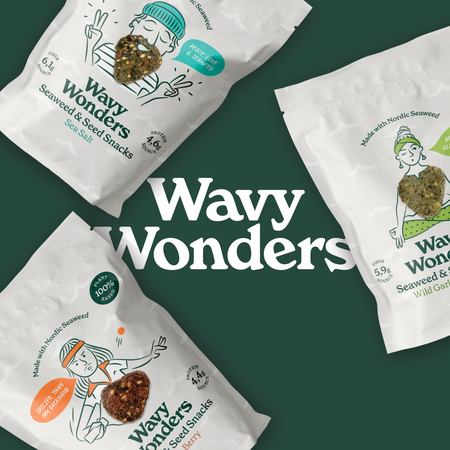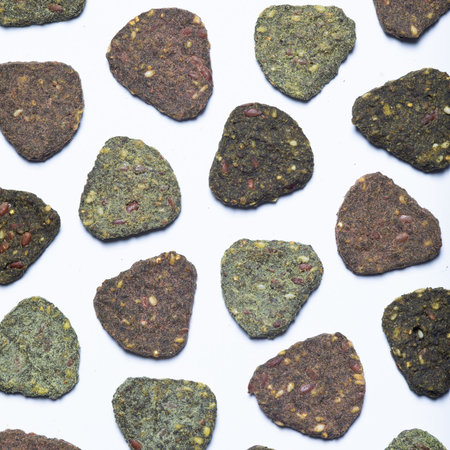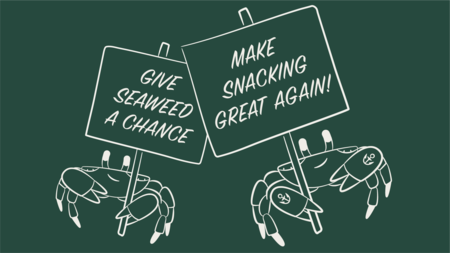Wavy Wonders makes filling snacks we feel good about
2023-11-16
New member Wavy Wonders makes healthy and filling seaweed snacks that are conquering more and more stores in Europe and hopefully the US in the near future. Founder Thomas Thulesen tells us about the successes and challenges of Wavy Wonders.
How did Wavy Wonders start?
‘A few years ago I saw a video on Facebook about how healthy seaweed was and I thought it was a lot of bullshit. But I did some research myself and came to the conclusion: seaweed is amazing. I thought, should I buy a boat and be a farmer or something in the industry, and I found out that there are very smart and capable people doing the supply side, and really the question for a lot of them was, how do you sell it? Or what is the demand side? And that's where we put our energy.
We started to develop a snack. We have been doing it for a couple of years now. We had our first production in February 2022, and we are now in about 1200 stores, 16 countries across Europe, and we are starting to push into the US as well, and we are having conversations with some exciting places there. Slowly but surely we are getting there.
We are at an interesting place right now. We've relied quite a bit on funding to help us and now we're turning around a real business that doesn't need as much funding, although funding is nice to have.
I am the only full-time employee, I have a co-founder and he does all the branding and we outsource everything else. Our packaging is in Oss in the Netherlands. For our seaweed supply we are currently working with Norwegian winged kelp.’

What makes Wavy Wonders so successful?
‘We have made a product with seeds, chia seeds, sesame seeds, quinoa. And we have about 12 to 13 per cent dry seaweed in the products. So our products are very filling but also healthy. So it is more recognisable as a crispbread rather than a crisp.
The idea of a filling snack that makes us feel good is the world we want to live in. It becomes a replacement for a protein bar in the afternoon, or a raw bar, or a bag of nuts.
A lot of the existing seaweed snacks similar to chips and they add a little seaweed, which has a lot of potential. We are trying to be a bit different.
We see a lot of repeat sales. Holland and Barret is our biggest chain, they have come back. But we have also tried some of the supermarkets in Denmark, which works in the centre of Copenhagen. But if you are a little bit out of the centre, most people don't like the idea of seaweed, and also from a cost perspective.’
What are your biggest challenges at the moment?
‘Our biggest challenges are cost comparisons. So when we go up against other seaweed snacks, they sell 18 gram bags for around a pound. That's hard for us to compete with because our product is more expensive because we use more seaweed and other ingredients. That's where we struggle.’
What could other North Sea Farmers approach you for?
‘For a conversation about their products. I'm having all these conversations about buying our products with buyers. My gut feeling is that if I go in with ten products instead and there is a buyer that is open or actually looking for seaweed, it feels like there is some kind of synergy or benefit across the industry that we can work together from a sales perspective. If there is someone in the network that has a product that sells interesting food products that might fit. I would be willing to have that conversation with them.’
What do you need in annual bases in terms of seaweed?
‘The projections for next year are between 1 and 3 tonnes of dry weight seaweed, that's 10 to 30 tonnes wet. If one of the US markets opens, these figures will change significantly.’

Why do you want to join North Sea Farmers?
‘I think we need to help each other in the seaweed sector. The pie is not big enough for all of us. For us, we are balancing short-term focus of building the business with the long-term focus of building the industry. And we are starting to bump into that balance between the short term and the long term because our supply is inherently long term, by the nature of the way seaweed grows. So it's about building multi-year partnerships with people who depend on us to take their supply, so that we can help them project what the future looks like and help them plan with that business.’
How do you think we can raise awareness of the benefits of seaweed as a food?
‘I believe that people need to experience seaweed, not just see it. So seaweed as food is ideal for that. You can eat it, smell it, taste it, touch it....
I spoke to a woman called Jennifer Bussmen Doing amazing work in the US promoting blue foods. Seaweed is part of that. She's doing a documentary series, a cookbook, she's raised a lot of money, she's working with a lot of influencers, she's working with schools, she's doing in-store launches.... She's amazing.
What I took away from her conversation is to take the investing people and turn them into - I wouldn't call them seaweed fanatics - but open to seaweed in our daily diet. And I use Kale as an example. Ten years ago, nobody in Denmark ate it. Now all the restaurants have it, it's everywhere.
I also believe in introducing seaweed to children. They have no idea what seaweed is, they are just happy to get a crunchy snack. The idea of planting a seed of seaweed that is edible at such an early stage is super exciting. Then they just think of it as food, rather than having to convert to it later.
I think exposing people to seaweed is important, I think it needs to be part of an everyday experience. If it stood on its own it would be frightening. So the idea of putting it in a snack makes it accessible. An ingredient, a recipe makes it accessible. The seaweed in a salad makes it scary. I don't have an answer to that. The idea of making it part of our everyday life is probably an opportunity in one way or another.’



